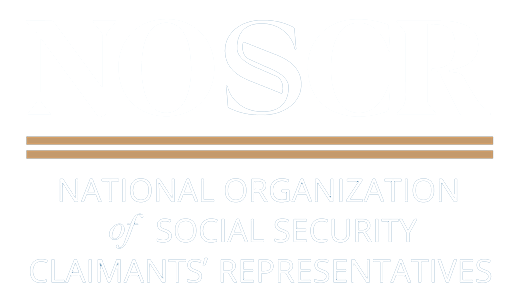
Can You Work While You Apply for Social Security Disability?
When it comes to Social Security Disability benefits, our Utah disability lawyers have one thing we really want you to know:
The number one rule of disability benefits is that if you’re working, you’re not “disabled” as far as Social Security is concerned.
This sounds terrifying because you’ve probably been experiencing aches and pains and other symptoms, going on for a while, and have just been pushing through. However, this is simply how Social Security views and defines disability.
It can be very frustrating when it takes a year or several years to get disability benefits, but you still need some sort of income to live.
Some people get by with the help of family or friends, but that’s not an option for everybody. Fortunately, the way Social Security defines work is a little different from how you or I may define work.
Social Security defines work using the term “Substantial Gainful Activity” or SGA. SGA is a term to describe what Social Security determines to be a significant amount of work—or rather, the cutoff line for disability.
In general, we talk about this using income levels, or the “gainful” part of SGA. In 2025, if you are working and make more than $1,620 a month before taxes, then you are making more than the income limit of SGA, and are therefore not eligible for disability benefits according to Social Security.
You can find the income limit for SGA over the years on Social Security’s website.
But work can also be “substantial” without being gainful and can keep you from getting disability benefits.
For example, if you are self-employed and working 30–40 hours per week but not earning much because your business isn’t doing well, Social Security will look at the value of your work rather than your income.
This means that if the work you’re doing would earn you more than the limit described above if you were doing it as an employee for someone else, Social Security will consider it to be SGA.
Keep reading for more on how SGA works from our team of Social Security Disability lawyers.
How SGA Affects You Before Applying for Disability
When applying for disability, you have to provide the date your disability began, and this must be a specific day.
Some people can pinpoint roughly when they first started experiencing symptoms, while others can say they had a car accident on this day, which is when everything started.
The first date that Social Security will really look at your disability is either the date when you stopped working or your work fell under SGA. Again, this has to do with how Social Security defines disability.
For example, if you have an issue with neuropathy and first started experiencing symptoms in July 2023 but were able to keep working full-time until September 2024, when you stopped working, Social Security will not think you had a qualifying disability between July 2023 and September 2024.
They will instead look at the disability as having started after September 2024.
On the other hand, imagine in this case that instead of stopping working in September 2024, you started working part-time, earning under SGA in July 2023.
Social Security could then use July 2023 as your disability start date since you did not work over SGA after that day.
Alternatively, let’s say you started having severe medical issues in July 2023 and stopped working, or you started working less than the SGA income limit. Then, because of medical treatment, you started to feel you could get back to working full-time in September 2024.
In this case, you had at least 12 months where you weren’t able to work and can still pursue disability backpay for what Social Security calls a “closed period of disability.”
The hard part is that you must prove not only was your disability so bad that you couldn’t work during that time but also that there was medical improvement that allowed you to return to work.
Exceptions to the Social Security Disability SGA Limit
There are a few situations where work will not count as SGA.
First, if you attempt to work over the SGA limit for a short time and have to stop because of your medical conditions, Social Security will not count that work as SGA.
For this exception to apply, your work must not begin within the first five months after your disability began, and the work cannot last more than six months.
Next, Social Security will deduct any money you spend on things related to your disability that make it possible for you to work.
For example, the cost of certain attendant care services, medical devices, equipment, prostheses, and similar items and services may be deducted. However, the costs of drugs and medical services are not deductible unless the drugs or services are necessary to enable you to work.
Another exception is for what’s called sheltered work. Sheltered work is non-competitive work sometimes done in a workshop, for a non-profit group, government agency, or another employer that provides employment as training.
Depending on the specific situation, Social Security will either not count the work as SGA or will look at the real value of the work, which may be below SGA.
The last example is attempts at full-time work that don’t work out because your health didn’t improve enough to keep working full-time.
Since you already have at least 12 months under SGA, you can have a nine-month period called a trial work period. This means you can attempt to work, and if it doesn’t work out, you can stop working, or work less than SGA, and not have your disability benefits stopped.
Keep in mind that if you make multiple over-SGA work attempts, you only get nine months total, so a month here and a month there will add up.
Additionally, you will need to have those 12 months under SGA before you can use the trial work period.
Working During the Disability Benefits Application Process
So, the bottom line is that you can work while applying for disability as long as your income does not reach or pass the SGA level.
This work can help support you through the application process.
There are some things that you will need to keep in mind about how to prove that you are working under SGA.
How Do I Prove I’m Working Under SSA?
To prove that you are working under SGA, you will need to fill out a form called the Work Activity Report.
There are two different types of this form depending on the type of work that you did. Normal work where you received paychecks from an employer and a W2, will require an SSA-821 Work Activity Report. Self-employment work will require an SSA-820 Work Activity Report.
These forms have some differences, but the main thing is that they ask you about the work that you have done since the onset date of your disability (remember we determined that this is usually set by when you stopped working over SGA).
You will also need to include how much you made while performing that work. The best way to prove this is to include pay stubs for the time that you worked. If you are unable to provide pay stubs because you are covering several years, W2 or 1099 tax forms will suffice.
If you are really close to the limit for SGA, there are some other spaces on the form that address exceptions such as impairment-related work expenses and sheltered work.
The form asks you to provide information on the money that you spend on your disability. For instance, you can include expenses from copays (for doctor visits or medications), or money spent on assistive devices (though these will likely only be helpful for a particular month).
It may be worth it to keep track of receipts regarding your medical expenses so you can prove what you have spent.
The form also asks about any income you have received that may have been unearned (that is, you didn’t perform work for the income). Examples of this would include vacation pay, sick pay, or bonus pay. If you spent your last few months of work using up a lot of sick pay because of your disability, this can help you establish an earlier onset date.
In conclusion, while not all work will prevent you from winning disability benefits, Social Security will scrutinize any work you do.
You will need to keep good records, including pay stubs and receipts, to show that your work doesn’t reach SGA.
The Utah disability lawyers at Barnes Disability Advocates can guide you through this process. Contact us today.

